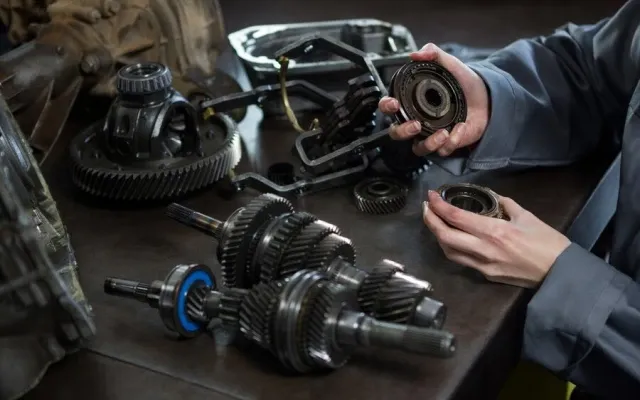What Is a Manual Transmission?
Before we jump into the problems and fixes, let's get a quick overview of what a manual transmission is. A manual transmission, also known as a standard transmission, is a type of gearbox that requires the driver to manually shift gears. It consists of a clutch pedal and a gear stick, allowing the driver to control the vehicle's speed and power.
Common Manual Transmission Problems
1. Grinding Gears
Problem: One of the most common issues drivers face is grinding gears. This happens when the clutch isn't fully disengaged, causing the gears to clash and make that cringe-worthy grinding sound.
Fix: To solve this, you need to adjust the clutch. Check the clutch cable and make sure it's not too tight or too loose. If the problem persists, the clutch might be worn out and in need of replacement.
2. Slipping Gears
Problem: Slipping gears occur when the transmission slips out of gear while driving. This can be quite dangerous and usually indicates a worn-out clutch or low transmission fluid.
Fix: First, check the transmission fluid level and top it off if it's low. If the fluid is fine, it's time to inspect the clutch. A worn clutch will need to be replaced to fix the issue.
3. Hard to Shift
Problem: If you're struggling to shift gears, the problem might be with the transmission fluid, the clutch, or the shift linkage.
Fix: Start by checking the transmission fluid level and quality. Old or contaminated fluid can cause shifting problems. If the fluid is fine, inspect the clutch and shift linkage for any signs of wear or damage.
4. Noisy Transmission
Problem: A noisy transmission can be caused by various issues, such as worn-out bearings, gears, or synchros.
Fix: Diagnosing a noisy transmission can be tricky, but start by checking the transmission fluid. If the fluid is low or dirty, it can cause noise. If the fluid is fine, you'll need to inspect the transmission components and replace any worn-out parts.
5. Clutch Pedal Problems
Problem: Issues with the clutch pedal, such as it feeling too soft or too hard, can indicate problems with the clutch system.
Fix: A soft clutch pedal usually means there's air in the clutch hydraulic system, which needs to be bled. A hard clutch pedal might indicate a problem with the clutch cable or linkage, which will need adjustment or replacement.
How to Troubleshoot Manual Transmission Problems
Check the Transmission Fluid
- Step 1: Park your car on a level surface and let the engine cool down.
- Step 2: Locate the transmission dipstick (usually near the back of the engine).
- Step 3: Pull out the dipstick, wipe it clean, reinsert it, and then pull it out again to check the fluid level.
- Step 4: If the fluid is low, top it off with the recommended type of transmission fluid for your vehicle.
Inspect the Clutch
- Step 1: Check the clutch pedal for proper free play.
- Step 2: Inspect the clutch cable or hydraulic system for any signs of wear or leaks.
- Step 3: If the clutch is worn out, replace it with a new one.
Examine the Shift Linkage
- Step 1: Locate the shift linkage under the hood or beneath the car.
- Step 2: Inspect the linkage for any signs of wear or damage.
- Step 3: Adjust or replace the linkage as needed to ensure smooth shifting.
FAQs
Q: How often should I check my transmission fluid?
A: It's a good idea to check your transmission fluid every 30,000 to 60,000 miles or as recommended by your vehicle's manufacturer. Regular checks can help you catch problems early and extend the life of your transmission.
Q: Can I drive with a slipping transmission?
A: Driving with a slipping transmission isn't safe. It can cause further damage to your vehicle and put you at risk on the road. It's best to address the issue as soon as possible.
Q: Why is my car making a grinding noise when I shift gears?
A: Grinding noises typically indicate that the clutch isn't fully disengaging, causing the gears to clash. This can be due to an improperly adjusted clutch or a worn-out clutch that needs replacing.
Manual transmissions are known for their durability and control, but like any mechanical system, they can experience issues. By understanding the common manual transmission problems and their fixes, you can keep your vehicle running smoothly and avoid costly repairs. Remember, regular maintenance and timely repairs are key to extending the life of your manual transmission. Stay informed and enjoy the ride!

